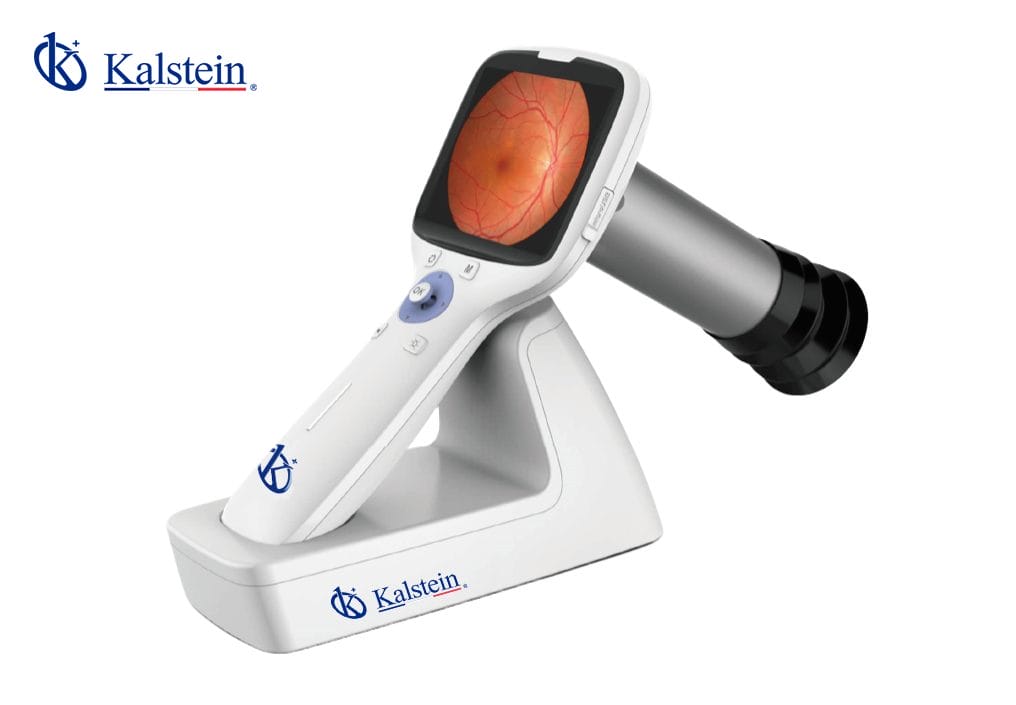The technology in veterinary medicine has advanced considerably, and one of the most notable developments is the veterinary fundus camera. This equipment is essential for detecting and diagnosing ocular pathologies in animals in a precise and efficient manner.
Below, I share my experience and knowledge about these types of cameras, based on tests conducted with various models available in the market.
We understand that you need equipment that brings the maximum value to your laboratory. We invite you to visit https://kalstein.co.uk/category-product/veterinary-sector/veterinary-fundus-camera/, to immerse yourself in our universe of cutting-edge technology equipment. Our prices are competitive and affordable; we combine the convenience of online shopping with the guarantee of an exceptional product. Because you deserve the best, we create and offer high-level laboratory equipment. Make your choice today, where science comes to life. https://kalstein.co.uk/
Veterinary Fundus Camera, Kalstein Brand
The veterinary fundus camera is an indispensable tool in modern veterinary practice. This device allows for a detailed visualization of the retina and other internal structures of the eye, which is crucial for diagnosing eye diseases at an early stage. Over my years of experience, I have witnessed how these cameras have revolutionized the way we approach ocular care in animals, enabling us to detect conditions such as cataracts, glaucoma, and retinal diseases with unprecedented accuracy.
Moreover, the high sensitivity of these veterinary fundus cameras allows for clear and detailed images, even in animals with eyes that are difficult to examine due to their size or shape. This capability is crucial for veterinarians as it facilitates a more accurate diagnosis, and therefore, more effective treatment.
Features of the Veterinary Fundus Camera
The veterinary fundus cameras I have tested stand out for several key features that make them superior to other ocular diagnostic tools. Firstly, their ergonomic design makes them easy to use over long periods, which is particularly important in veterinary clinics with a high patient volume. Additionally, many of these cameras are equipped with LED lighting technology, providing uniform, glare-free illumination, which is essential for obtaining high-quality images.
Another remarkable aspect is the integration of advanced software that allows for image storage and analysis. This software not only facilitates the comparison of images over time, which is vital for monitoring chronic eye diseases, but also makes it easy to share results with colleagues or specialists, enhancing collaboration and the multidisciplinary approach to veterinary eye care.
Why Does the Veterinary Fundus Camera Have This Price?
The price of a veterinary fundus camera may seem high, but it’s important to understand what we are acquiring with this investment. These devices combine advanced technologies that not only improve diagnostic quality but also increase operational efficiency in a veterinary clinic. Through my experience with different models, I have noticed that the cost is justified by several factors.
Firstly, the image quality produced by these cameras is exceptional. This is due to the combination of high-quality lenses, advanced sensors, and lighting systems that ensure a clear and precise view of the fundus. Additionally, the durability of these devices, along with the technical support and software updates often provided by manufacturers, ensures that the investment pays off over the years.
Compare Veterinary Fundus Cameras with Similar Products
When comparing the veterinary fundus cameras available on the market, including those offered by renowned brands such as Optomed and Eickemeyer, I have identified several key differences that make Kalstein cameras stand out. Below, I share my observations based on a detailed comparison of features and performance.
Optomed offers a range of veterinary fundus cameras known for their portability and ease of use. However, I have noticed that in terms of image quality and durability, Kalstein models offer superior resolution and a more robust build, making them more suitable for intensive use in clinics with high patient volumes.
Eickemeyer, on the other hand, has cameras that integrate advanced digital technology, but in my experience, the accompanying software is less intuitive and presents limitations in terms of comparative analysis functions, compared to Kalstein’s software, which is more comprehensive and user-friendly.
Finally, the option offered by Medical Expo presents cameras with a compact design and competitive prices, but they lack the customization options and specialized technical support that Kalstein provides, which can be a decisive factor for clinics seeking reliable equipment with constant backing.
Pros and Cons of Veterinary Fundus Cameras
|
Pros |
Cons |
|
High image resolution |
High price |
|
Advanced and intuitive software |
Requires specialized training |
|
Ergonomic design |
May be difficult to acquire in some markets |
|
Durability and resistance |
Slightly heavier than other models |
|
Specialized technical support |
|
|
Compatible with other veterinary systems |
|
|
Glare-free LED lighting |
|
|
Cloud-based image storage and analysis |
Advantages of These Veterinary Fundus Cameras
Over the years, I have had the opportunity to test different veterinary fundus cameras, and I can confidently state that the advantages of the more advanced models are numerous. First of all, the ability to capture high-resolution images allows for more accurate and earlier diagnosis of ocular pathologies, leading to better treatment for patients. Additionally, the integrated software facilitates data management and analysis, enabling veterinarians to effectively track ocular diseases over time.
Another important advantage is the robustness and durability of these devices. Unlike other medical equipment that may require frequent replacement or repair, high-quality veterinary fundus cameras are designed to withstand constant use and the often challenging conditions of a veterinary clinic.
Other Benefits of These Veterinary Fundus Cameras
In addition to the mentioned advantages, these cameras offer additional benefits worth highlighting. For example, their integration with clinical management systems allows for easy storage and sharing of results, which is crucial for collaboration among different specialists and for creating complete and accurate medical histories.
The versatility of these cameras is also a plus, as they can be used on a wide range of animals, from small rodents to large exotic species. This makes them an essential tool in any veterinary clinic that treats a diverse patient population.
Discover Opinions on Veterinary Fundus Cameras
The opinions of veterinarians who have used these cameras are mostly positive. Many highlight improved diagnostic accuracy and ease of use as the main advantages. One colleague in particular mentioned that since incorporating the fundus camera into his daily practice, he has been able to detect eye problems at much earlier stages, significantly improving the outcomes of his treatments.
Other frequent comments include praise for technical support and the ease of software integration with other clinic systems. Although some users mention that the price can be an initial barrier, most agree that the investment is justified by the long-term benefits the equipment offers.
Frequently Asked Questions
Is it difficult to use a veterinary fundus camera?
No, although it may require some practice at first, most veterinary fundus cameras are designed to be intuitive and easy to use. The latest models include software that guides the user through the image capture process, ensuring consistent results even for less experienced users.
How often should I maintain the camera?
Maintenance of a veterinary fundus camera is usually minimal, but it is advisable to carry out periodic checks to ensure proper functioning. This includes regular cleaning of the lenses and ensuring that electronic systems are in good condition. Most manufacturers, including Kalstein, offer technical support and maintenance plans that make this process easier.
Can I use the camera on different types of animals?
Yes, veterinary fundus cameras are designed to be versatile and can be used on a wide variety of species, from small rodents to large animals such as horses. This makes them an indispensable tool for clinics that treat a diverse patient population.
What advantages does Kalstein’s camera software offer?
Kalstein’s camera software is particularly notable for its ease of use and extensive analysis functions. It allows for cloud-based image storage, comparison of results over time, and the generation of detailed reports. Additionally, it is compatible with other clinical management systems, making it easier to integrate into the clinic’s daily operations.
What is the difference between portable and desktop cameras?
Portable cameras are more compact and easier to transport, making them ideal for veterinarians who work in multiple locations or need to perform field diagnoses. However, desktop cameras usually offer greater stability and, in some cases, better image quality due to their more robust design and larger components.
Is it profitable to invest in a veterinary fundus camera?
Definitely. Although the initial investment may be considerable, the long-term benefits in terms of improved diagnostic accuracy and operational efficiency justify the cost. Additionally, the use of these cameras can improve treatment outcomes and client satisfaction, which in turn can lead to an increase in clientele and clinic revenue.
Conclusions on These Veterinary Fundus Cameras
In conclusion, veterinary fundus cameras are an invaluable investment for any clinic looking to improve the quality of its ocular diagnostics and treatments. These cameras offer a combination of high technology, ease of use, and durability that makes them superior to many other options on the market. While the cost may seem high, the benefits they offer in terms of diagnostic accuracy, operational efficiency, and customer satisfaction fully justify the investment.
Kalstein stands out in this field not only for the quality of its cameras but also for the technical support and customization options it offers. If you are considering acquiring a veterinary fundus camera, I would recommend exploring the options that Kalstein has to offer, as they provide an excellent combination of advanced technology and long-term reliability.




